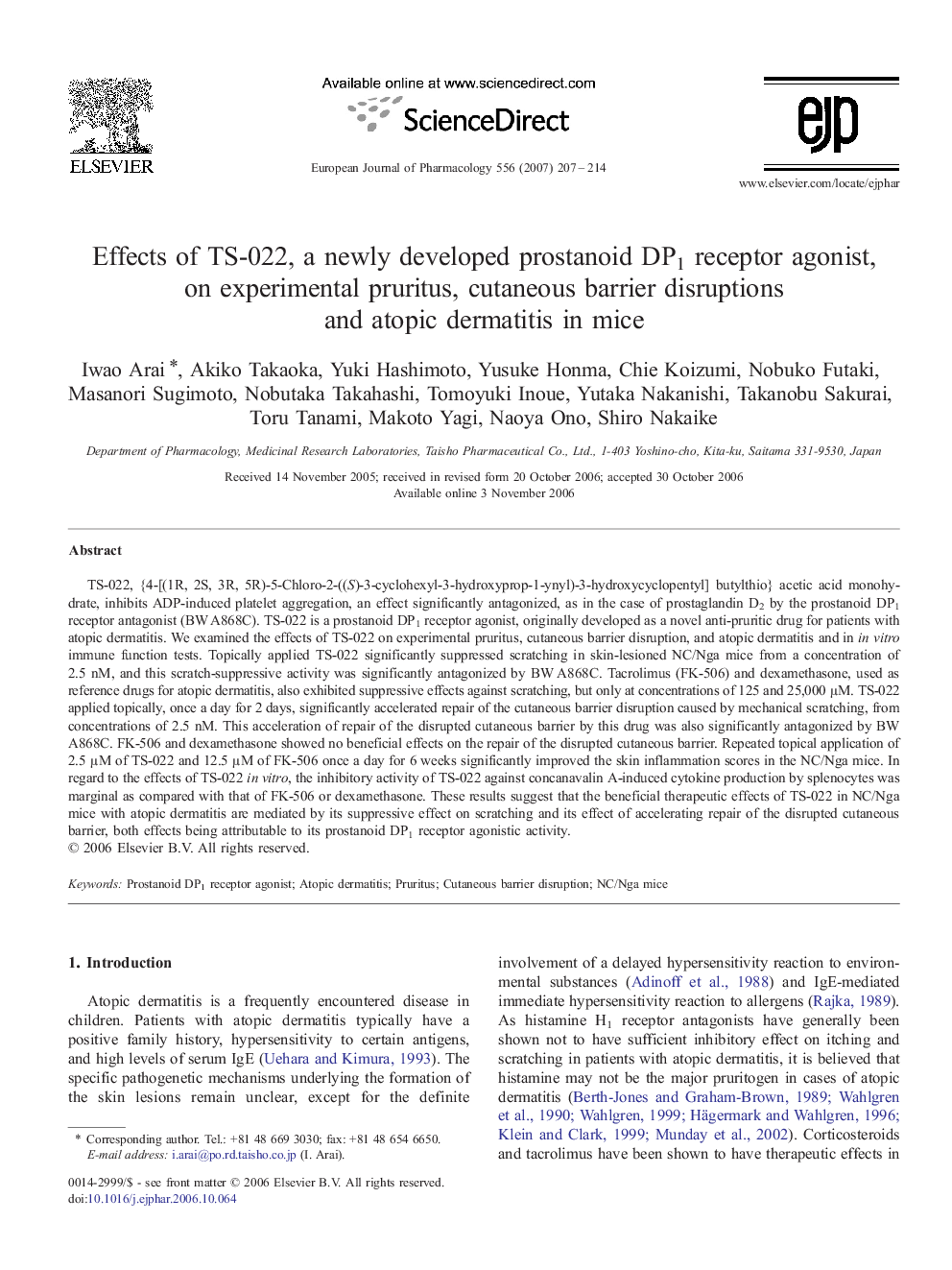| Article ID | Journal | Published Year | Pages | File Type |
|---|---|---|---|---|
| 2536423 | European Journal of Pharmacology | 2007 | 8 Pages |
TS-022, {4-[(1R, 2S, 3R, 5R)-5-Chloro-2-((S)-3-cyclohexyl-3-hydroxyprop-1-ynyl)-3-hydroxycyclopentyl] butylthio} acetic acid monohydrate, inhibits ADP-induced platelet aggregation, an effect significantly antagonized, as in the case of prostaglandin D2 by the prostanoid DP1 receptor antagonist (BW A868C). TS-022 is a prostanoid DP1 receptor agonist, originally developed as a novel anti-pruritic drug for patients with atopic dermatitis. We examined the effects of TS-022 on experimental pruritus, cutaneous barrier disruption, and atopic dermatitis and in in vitro immune function tests. Topically applied TS-022 significantly suppressed scratching in skin-lesioned NC/Nga mice from a concentration of 2.5 nM, and this scratch-suppressive activity was significantly antagonized by BW A868C. Tacrolimus (FK-506) and dexamethasone, used as reference drugs for atopic dermatitis, also exhibited suppressive effects against scratching, but only at concentrations of 125 and 25,000 μM. TS-022 applied topically, once a day for 2 days, significantly accelerated repair of the cutaneous barrier disruption caused by mechanical scratching, from concentrations of 2.5 nM. This acceleration of repair of the disrupted cutaneous barrier by this drug was also significantly antagonized by BW A868C. FK-506 and dexamethasone showed no beneficial effects on the repair of the disrupted cutaneous barrier. Repeated topical application of 2.5 μM of TS-022 and 12.5 μM of FK-506 once a day for 6 weeks significantly improved the skin inflammation scores in the NC/Nga mice. In regard to the effects of TS-022 in vitro, the inhibitory activity of TS-022 against concanavalin A-induced cytokine production by splenocytes was marginal as compared with that of FK-506 or dexamethasone. These results suggest that the beneficial therapeutic effects of TS-022 in NC/Nga mice with atopic dermatitis are mediated by its suppressive effect on scratching and its effect of accelerating repair of the disrupted cutaneous barrier, both effects being attributable to its prostanoid DP1 receptor agonistic activity.
